Pursuing lost civilization and walking into Liangzhu for five thousand years
China's Liangzhu Ancient City successfully applied for cultural heritage

Have you heard about Liangzhu Civilization recently?
On July 6, at the just-concluded 43rd World Heritage Committee meeting, Abfas Garayev, chairman of the conference, decided that China's Liangzhu Ancient City had successfully applied for the World Heritage Site and China had added another world heritage site, totaling 55. Western scholars have always refused to recognize the five thousand years of Chinese civilization. The discovery of the Liangzhu Civilization has become the most convincing evidence. With its tall palace foundation, complete city wall ruins, and ancient water conservancy projects, the Liangzhu Ancient City Site proves that Chinese civilization entered its early national form more than 5000 years ago.
The ruins of Liangzhu Ancient City are located in Yuhang, Hangzhou, 16 kilometers away from the center of Hangzhou City. It is known as the oldest Hangzhou. It dates back 5300-4300 years, hundreds of years earlier than the Xia Dynasty, the earliest dynasty in China. Following the popularity of the World Heritage application, I and my partners came to Liangzhu to explore the five thousand years of past and search for lost civilization, full of expectations.
The first time I heard about Liangzhu was in Cai Jun's suspense and horror novel "The Abandoned Village Apartment". He described in detail the passage of the ancient city of Liangzhu:
"Five thousand years."
What? My heart seemed to have been hit hard again, and I murmured:
"Five thousand years?" I quickly shook my head and said,"Impossible. You can't be mistaken. How can it be so ancient? China's history is less than 5,000 years old."
However, Sun Tzu Chu was extremely calm: "Have you ever heard of the Liangzhu Civilization?"
"Liangzhu Civilization? I have read some reports about the ancient and mysterious Liangzhu Civilization in Jiangnan, right?"
"Yes, the so-called Liangzhu Civilization or Liangzhu Culture is named after Liangzhu Town, which was first discovered in Yuhang, Zhejiang Province in 1936. It is the most important prehistoric civilization in the middle and lower reaches of the Yangtze River in China and the main source of early civilizations in East Asia. one. According to archaeological carbon-14 determination, its age is about 5,300 to 4,000 years ago. Most of the Liangzhu Cultural sites discovered in modern times are scattered in the Jiangnan area. The Qingpu Fuquan Mountain site in the suburbs of Shanghai belongs to the Liangzhu Culture."
When I came to this place when I was a boy, I firmly believed that it was purely fiction. Now, when I know that this place really exists, I am amazed.
Our trip to Liangzhu began when we met Yuhang.
In Yuhang, in ancient times, Dayu passed through the flood control and stopped for this beautiful landscape. The subsequent 5000 years of Liangzhu Culture, 2000 years of Canal Culture, and 1000 years of Zen Tea Culture gave this land more legends and stories. This city sits on the Dajingshan Ecological Zone in the west, including four towns in the west of Yuhang-Jingshan, Huanghu, Cormorant and Baizhang, as well as Dayu Valley in Yuhang Street and the west of Pingyao Town. It involves a total of 36 administrative villages and 5 communities, with a total area of 381 square kilometers.
The first stop, we went to Dajing Mountain in the heavy rain. Dajing Mountain is the most important ecological protection site and green barrier area in Yuhang District. Here we experienced ordering tea and learned Zen tea culture. Driving to Liangzhu, I found that there are many interesting things in Liangzhu in addition to the ruins park, such as the Liangzhu Museum where you can visit the entire afternoon, the modern style avenue, Liangzhu Ecological Forest Park, and the Liangzhu Cultural Village, which is perfect for taking photos... Two and a half days. The arrangements are full.
Our Liangzhu itinerary
D1: July 12
10:00-10:30 Gathering at Hangzhou East Railway Station
10:30-11:30 Go to Dajing Mountain
11:30-13:00 Xindust-free restaurant, lunch
13:00-17:30 Visit Dajingshan Rural National Park and Zen Tea Culture Experience
17:30-18:30 Go to Liangzhu and check into Yezi Hotel
18:30 Liangzhu Private Kitchen Dinner
D2: July 13
8:30-9:30 Gather for Liangzhu
9:30-12:00 Experience shooting at Liangzhu Ancient City Ruins Park
12:00-13:00 Lunch, Jiangnan Posthouse
13:00 - 17:30 Liangzhu Museum
17:30-19:00 Dinner Liangzhu Food Jiude
19:00-19:30 Return to hotel
D3: July 14
8:30-9:00 Breakfast gathering
9:00-11:30 Visit Liangzhu Cultural Village, Liangzhu Food Street, Liangzhu Cultural Center, Meili Island Hall
11:30-12:30 Lunch, Jiangnan Posthouse
Return journey at 12:30

"Zen tea blindly understands the world, and the unique is the Jingshan"
A year later, I came to Dajingshan again. Standing in front of the empty Jingshan Temple, I remembered that last spring, yulan blossoms were blooming, incense was booming, and there was an endless stream of people coming to go hiking. The rain is getting heavier and heavier at this moment, passing through the rain-soaked bamboo forest and entering the fog. Only in this mountain, the clouds are deep and the fog dissipates to see large undulating tea gardens.
The refreshing feeling in the mountains is something that is not found in the north. I want to share some rainwater and bring it back.

Hangzhou Dajing Mountain has a forest coverage rate of as high as 70%. In spring, the mountain flowers are blooming and fragrant. In summer, the green bamboo breeze provides shade. In autumn, the red leaves of ancient trees are beautiful in the spring light. In winter, snow is flying and covered in silver.

The ancient Jingshan Temple has been around for 1200 years. It flourished in the Southern Song Dynasty. It once surpassed Lingyin Temple and became the first of the five major Buddhist monasteries in the south of the Yangtze River. It is large in scale and has many monks. Many Japanese monks come to visit and seek Dharma. There are thousands of temples built. Due to war and disrepair, the original buildings of the temple hall are basically absent. Only one bell tower is hung inside, a large bell from the first year of Yongle of the Ming Dynasty, three Iron Buddhas in the Song Dynasty, and a monument to ancestors of the Zhizheng Mountains of the Yuan Dynasty.

Temple in heavy rain

A hike in the heavy rain





A cold rain fell countless flowers

The tea gardens in the distance are hidden in the clouds

food| There is no dust in the heart of Dajing Mountain
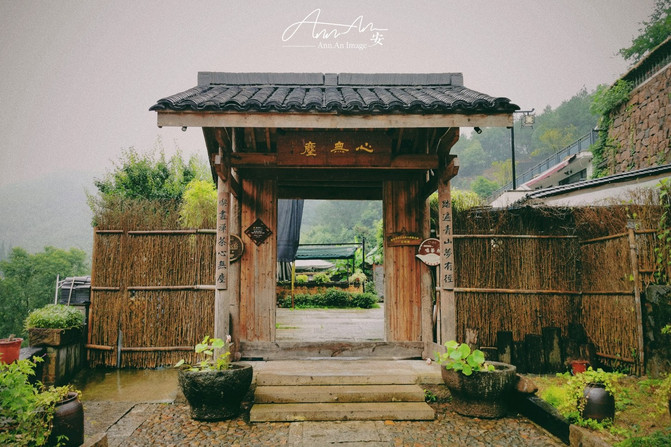
The rain is getting heavier and heavier in the mountains. The mountains are silent, full of fog, and a little wet and cold. Looking for a place to hide from the rain and eat.
There are limited places to eat near Jingshan. The restaurant I found in the reviews is calm and has a Zen name. It overlooks the tea garden and makes me feel comfortable. I hide in the restaurant. The rain outside makes me feel calm.
Listening to the rain and drinking tea, we ate the local seasonal vegetables, water chestnut, bamboo shoots, dried bamboo shoots... They are all fresh and good ingredients. The restaurant's cooking is very common, and chicken soup warms the stomach.

Local dried bamboo shoots

stir-fried rice bamboo

Drink tea and wait for the rain to stop

The garden of the restaurant is randomly placed with flowers and plants planted by the owner. I heard that he didn't take care of them carefully. When they are placed outside and in nature, they still grow very well.



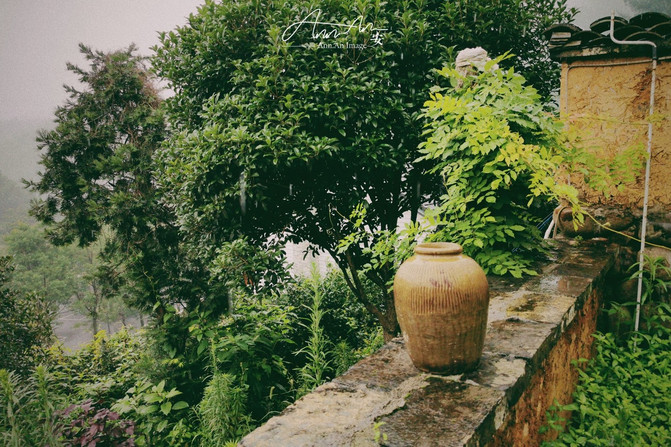

In the distance, there are large tea gardens again, with the word "Jingxin" hanging on the wooden door

Houses in the Rain and Fog

Jing| Dajingshan Tourist Center

The rain was too heavy, so we canceled the afternoon hiking in Dajingshan and came to the Dajingshan Tourism Consulting Center. When we entered the door, we exclaimed, this place is too luxurious and beautiful. I heard that it cost more than 100 million yuan to build and used bamboo, wood, stone, white walls and black tiles, as if hidden in the sea of bamboo. The wooden buildings have a warm yellow tone, showing the strong Zen meaning of Jingshan everywhere.
The whole building has four floors: the first and second floors underground are underground garages, which are equipped with tourist rest halls and transfer stations for tourist buses and small cars, truly realizing seamless connection of internal and external transportation; the first floor is a tourist consultation service center and reception center; The second floor is mainly the office area of the distribution center, which can be used for cultural exchanges, exhibitions, leisure, entertainment, catering...



We experienced a particularly interesting event on the second floor of the visitor center. We ate a cup of tea with a very ceremonial feeling (sore wrist) and learned two or three things about ordering tea.

Do you still remember the sisters 'daily order of tea in Know No, Know No? The tea-ordering culture that flourished in the Song Dynasty was passed down in the social etiquette of wealthy families, literati and literati. After thick tea bubbles were made, Song people would use tea as ink and paint on the tea soup. It was called the "Tea Hundred Opera". The ancient entertainment of Yueqing is fragrant and poetic.
The way the Song people drank tea was different from the Tang Dynasty people's boiling tea and the Yuan and Ming Dynasties. Instead, they ground the tea into powder and ordered it. It is said that making tea wasted most of the nutrients of the tea leaves. Only by eating it. The magical power of tea can be exerted. Lu You's "Summer Day in the Pool Pavilion" wrote: "The tea falls on the small pond and the snow is filled with snow, and the cold spring gets fire and makes the sound of pine trees." This is a poem describing grinding tea and boiling water: the tea powder ground by the stone mill is like white snow flakes, and the sound of boiling water is like the sound of pine wind.
"If a worker wants to do a good job, he must first sharpen his tool." The Song people were very particular about the tools used to order tea. One was to warm the cup, the second was to take tea, the third was to mix paste, the fourth was to inject soup, and the five points... The tea bowl is also called a bamboo bowl. It is a special tool for ordering tea, something that looks like a small broom, used to stir and beat the tea soup. "It attracts the wind to the crab's eyes, and half a bottle of flying snow produces dragon buds. Fragrant green hair and clouds grow on feet, and wet beard and waves roll up flowers." Xie Zongke, a poet of the Yuan Dynasty, vividly described the scene of foam forming when a bamboo cane was struck in his "Tea Blossom".

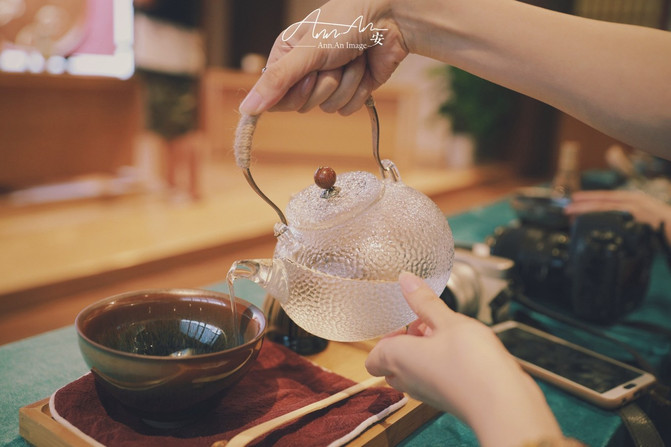

It looked easier than it was done. The wrist was sore, but no thick and dense layer of foam was formed. I had to continue processing.

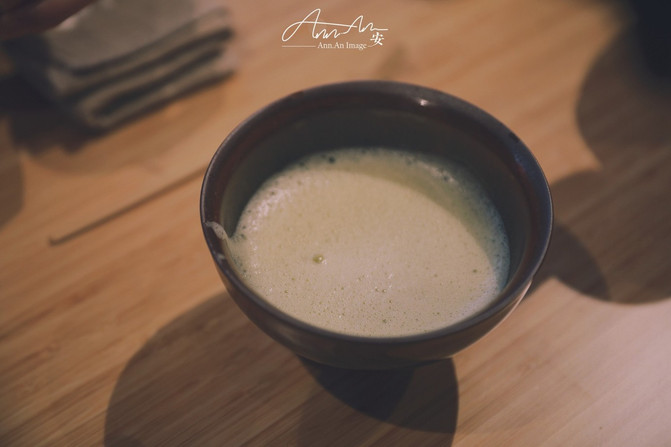
Using thick matcha powder to write on the tea foam, we ordered the path mountain written by the tea teacher


I wrote my name
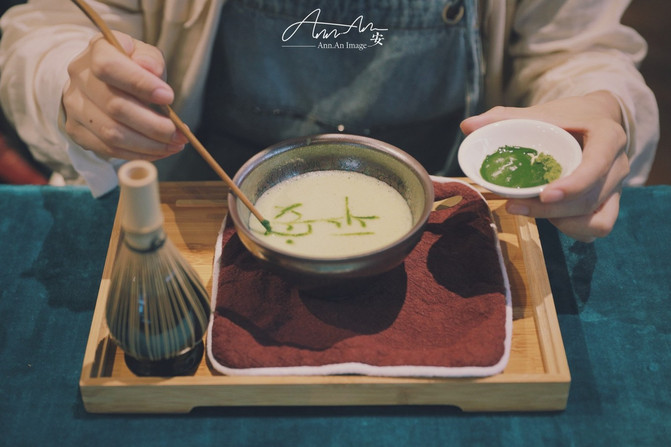

After drinking the tea I ordered myself, I would stutter and leave a lingering aroma. The tea was slightly astringent. The teacher said that if I added some milk, it would be a good matcha latte.

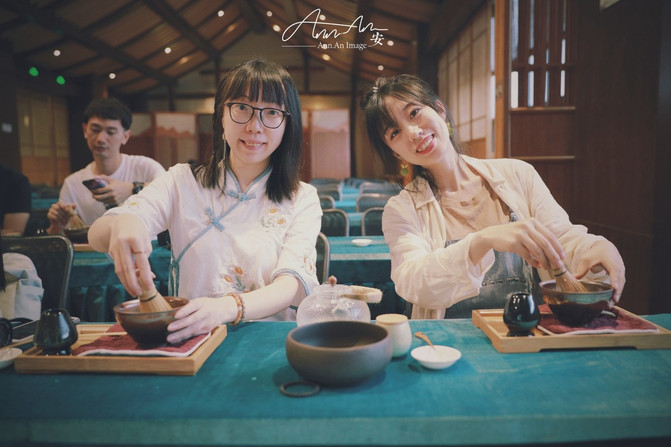
Jing| Liangzhu ancient city ruins Park

The next day, we finally arrived at our main destination, Liangzhu Ancient City Ruins Park. Currently, the Ruins Park requires an appointment to visit. At the same time, due to the need to effectively protect the ruins, the current limit is 3000 people per day. It is understood that since the park was opened for reservations, tens of thousands of people have participated in reservations.
The heavy rain kept coming. We took a map in the tourist area, led our explanation teacher to distribute raincoats to each of our friends, and got ready to go to the ruins with a history of 5,000 years. We were fascinated by time. All this was extremely exciting.
Today's Liangzhu Ancient City Heritage Park still retains the original wetland ecosystem in a large area. The park is too big, with a total planned area of 14.33 square kilometers. We need to take a battery car the whole way from one attraction to another. The park is lush with lush forests and water systems. A large number of rice are interplanted in the park. You can see many beautiful birds. There are fish in the puddles along the way, and crayfish are also seen! All of this reflects the characteristics of the ancient Liangzhu Culture and rice-farming civilization, and shows the style of the water town and country during the Liangzhu Ancient City.
Our tour reached the city gate and city wall, archaeological experience area, river course and workshop, Zhishan Observation Deck, Mojiao Mountain Palace, Anshan King Mausoleum, West City Wall Ruins, Fengshan Research Base, Daguan Mountain Rest Area and Luyuan. Ten major areas. There are still many sites that have not been opened. Currently, the limited open area of the site is the core part of the city site area, covering an area of 3.66 square kilometers.
Fortunately, I was able to discover how the Liangzhu people lived more than 5,000 years ago. Standing in the heavy rain, face to face with ancient times.

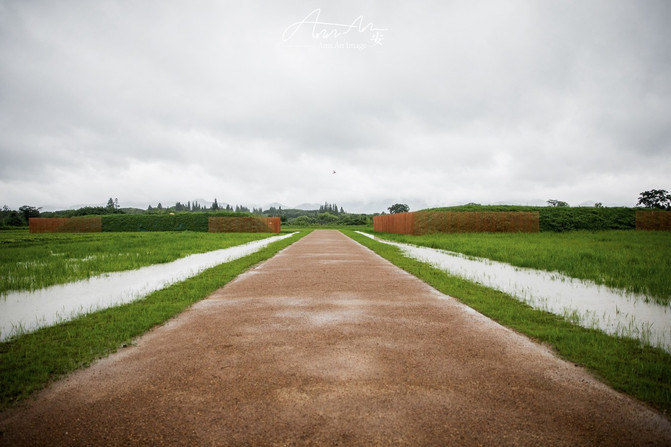










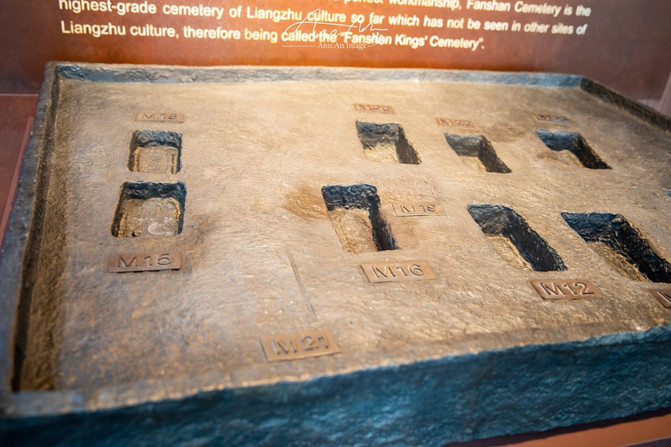










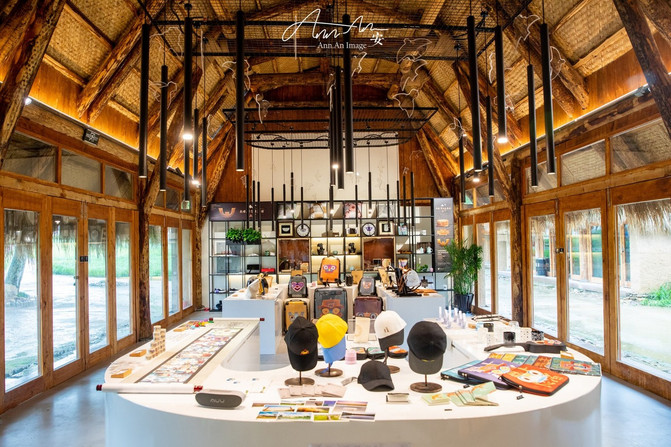
Liangzhu ancient city ruins Park
Opening hours: 9:00 to 17:00 every day, and admission hours are 9:00 to 16:00 every day.
Consultation telephone: 0571-85855300
Transportation conditions: Sightseeing buses are operated in a public manner in the park. Tourists can use their "visitor passports" to visit the sightseeing bus stops in the park many times. Outside the ruins park: 1. Park traffic guidance signs and signs are set up on the periphery, and a smart road guidance system is built at the same time;2. Open a special bus connecting line (Road 1222M) from Liangzhu Metro Station to Liangzhu Ancient City Ruins Park via Liangzhu Museum.
Open the holiday bus tourist line (No. 257H) from East Railway Station (West Railway Station) to Liangzhu Ancient City Heritage Park.
charging policy
Tickets: 80 yuan/person (including sightseeing tickets)
The park provides customized explanation services at a price of 100 yuan/per 10 people/time. The park's south gate visitor entrance and exit also provides a tour guide rental service, with a rental fee of 20 yuan each time.

To explore the mystery of Liangzhu, after walking through Liangzhu Ruins Park, you must go to the Liangzhu Museum. Follow the explanation and carefully walk through the three major exhibition halls.
Five thousand years ago, were people's lives backward and ignorant? What is shown in front of us is that the Liangzhu people can grow rice, brew wine, and cook food. They raise wild boars, weave and build houses. They create characters, build water conservancy projects, unify beliefs, and establish a country.
The mysterious coordinates of Liangzhu, Liangzhu is located at the psychedelic 30 degrees north latitude. The 30th degree north latitude is full of mysterious human deaths, plane crashes, pharaoh curses, ghost submarines... It also has dazzling civilizations, including the Maya, ancient Egypt, and Cuban Biron civilizations.
As for how exquisite the life of Liangzhu people is, Cai Jun mentioned Liangzhu's "jade civilization" in his horror novel "Wandering Village Apartment".
Liangzhu people like to wear exquisite jade ornaments and use high-quality lacquerware (as shown below: The red lacquerware is covered with jade beads, symbolizing Liangzhu people's worship of the vast starry sky). The pattern of jade cong is exquisite, with lines like hair, symbolizing the rise and fall of the country, just like the sun temple in ancient Egypt. What is surprising to people is that humans who were still in the Neolithic Age at that time mastered such a superb jade carving process. Jade cong, jade bi, jade axe, jade comb back, conical vessel.

Jade Cong









The symbol of "birds standing on altar pillars" is a symbol. The treasure of the town hall is a carved jade jade. The morphological features of the bird standing on the high platform are very artistic, and 4 pieces are collected by the Frier Art Museum in the United States.


The building of the museum itself is a work of art. It was designed by the famous British architect David Chipfield. It is based on the design concept of "a jade cone scattered on the ground" and consists of four long buildings that are not completely parallel. There were round stones like jade in the small pool in the inner courtyard, and there were diagonal jade congs marked with road signs on the edge of the grass. Later, I saw that the garbage cans also looked like jade congs.





The emergence of pottery made it more convenient for the lives of our ancestors. The emergence of pottery pots and pottery bowls can already reflect that the ancestors of Liangzhu already had a normal human lifestyle: pottery pots held water and pottery bowls provided food.





From early rice planting to the emergence of stone tools, the creativity of Liangzhu ancestors in farming civilization was very amazing. Although some stone tools are rough, their respective functions can still be seen.












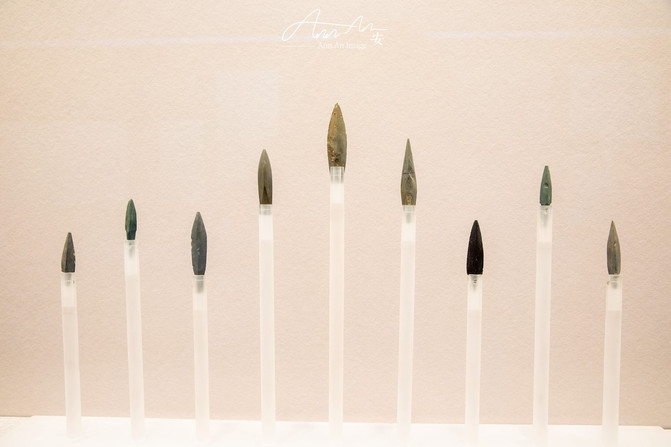



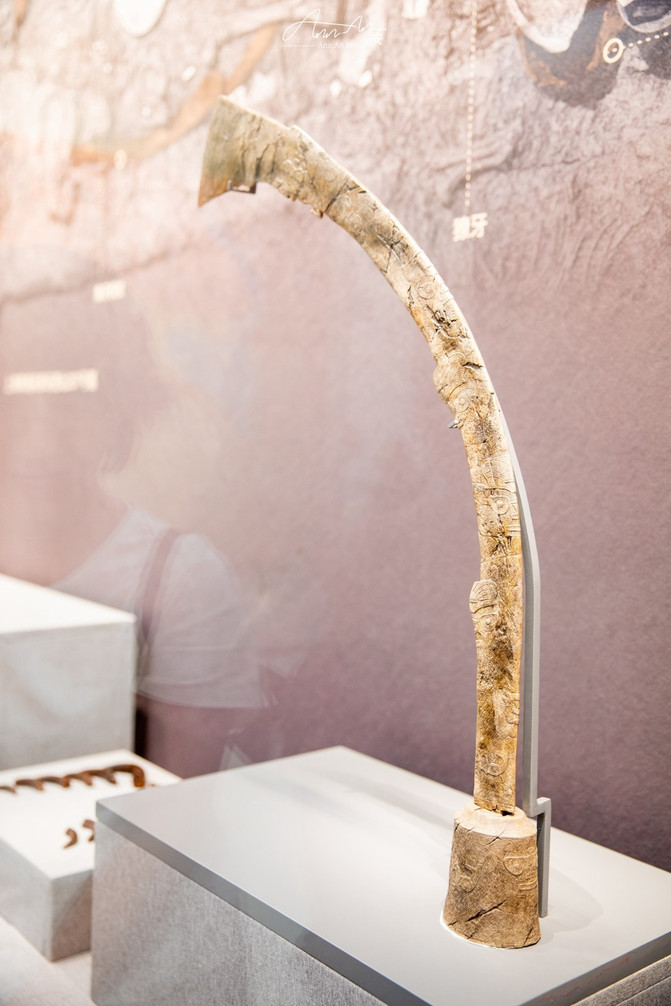






Early writing

A lovely Chinese alligator



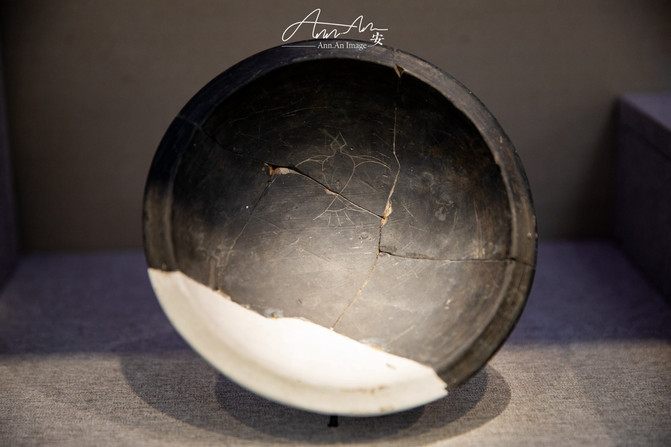
Do you know what the houses the ancients lived in thousands of years ago looked like? It doesn't seem to be much different from the current rural house style. These are all restored in museums ~





Many people are interested in the Liangzhu Tomb, but the cemetery cannot be moved into the exhibition hall. In the exhibition hall of the museum's "Liangzhu Ancient City", the nine tombs of the Anshan King Mausoleum and the utensils in the tombs-miniature versions are very realistic and have no difference in detail. This is currently a very popular 3D printing technology internationally. It is used extensively in the exhibition hall of this renovation, including cemeteries, palace areas, and workshop areas. This is rare in current exhibitions in domestic museums.


In the Zhongjiagang workshop area, you can see all kinds of interesting people, sleeping, lazy, playing, fishing, making jade, making wood, and making pottery. 3D printing restores the real ancient life scene as much as possible.

Liangzhu Museum Cultural and Creative District



Jing| Liangzhu Culture Village

Discover Liangzhu Cultural Village, a small photo destination in Hangzhou
After coming to Liangzhu to see the ruins and museums, I would recommend several super foreign check-in places. Scattered around Liangzhu Culture, there is a gray brick house in the center of the Cultural Village, where restaurant coffee is gathered. Address: No. 12 Yuniao Road, Yuhang District
Meili Zhoutang
A triangular chapel designed by Takao Tsujima, the overall shape of the building combines Chinese "hard mountain" buildings with foreign ones.
The design concepts of religious buildings were combined. When I went there, it happened to be a Sunday. There was a church inside, and no indoor photos were taken.
Liangzhu Cultural Center
Designed by Japanese architect Tadao Ando, it cleverly uses the role of light in the building. Light and shadow, gray tone, cement, geometry... make the building look different from every angle.
Xiaoshuguan
Xiao Library is inside the Cultural Center. Gao Xiaosong is the director. He only reads and does not sell books. He needs to make an appointment in advance and swipe his ID card.
Enter. You can only use your mobile phone to take photos inside. I couldn't go because I didn't make an appointment (=_=), let's go next time.




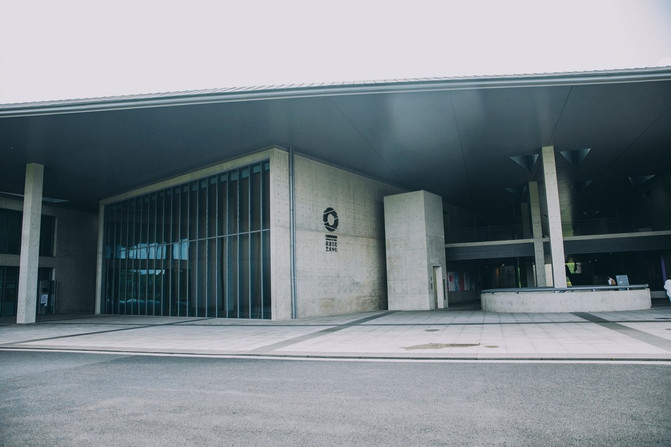





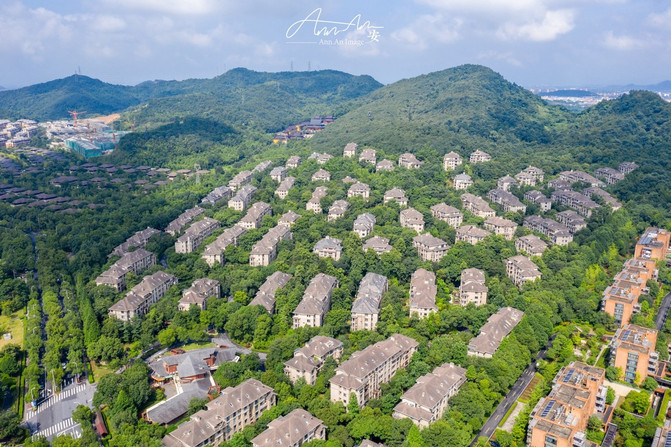

food| Liangzhu Jiangnanyi

We must recommend friends to try the best restaurant we have eaten in our three days in Liangzhu. We came twice, and during the meal, our friends at the table always said,"Ah, this is delicious." Sound, ordinary ingredients taste beyond imagination, but not every dish is worth trying.
Make sure to order personal recommendations,
South breast steak is a super dish with rice. The ribs are soft and delicious.
Three cups of chicken stinky tofu. What kind of immortal stinky tofu is this? It's so delicious! For the same stinky tofu, we ordered stinky tofu beef stew for the second time. It was very ordinary. The beef was very small and rare, and the taste was strange.
Stir-fried bacon with dried lettuce is so plain and ordinary when served. When you eat it, tears will flow. It's delicious. Please give me another bowl of rice! The sweet and green dried lettuce is paired with non-salty and non-greasy bacon. I want to turn around when mixed with rice, so I must order!
Mustard flowers, what a special taste, the store really loves to be creative! Cuttlefish braised pork, this is the first time northerners have seen such a combination. It's very delicious ("丨 ω 丨)" Hey
I feel that the innovative dishes developed by the store are all delicious, and the basic dishes are all very average. The pepper chicken is reasonable, and the crab roe tofu is really ordinary. We ordered a yellow croaker rice cake. This rice cake is too big. At a glance, I am completely full, and no one eats it at all. The yellow croaker is also very salty. I feel like the chef has suddenly performed abnormally. I ordered tofu and sour soup and fish head for the second time, which was not bad.
In short, avoid thunder spots. Overall, it's delicious. I recommend you to try it. One small comment: Why don't you sell large bottles of cola in the store? Eight yuan a can of cola is too expensive. We have more than a hundred people at our table just cola...












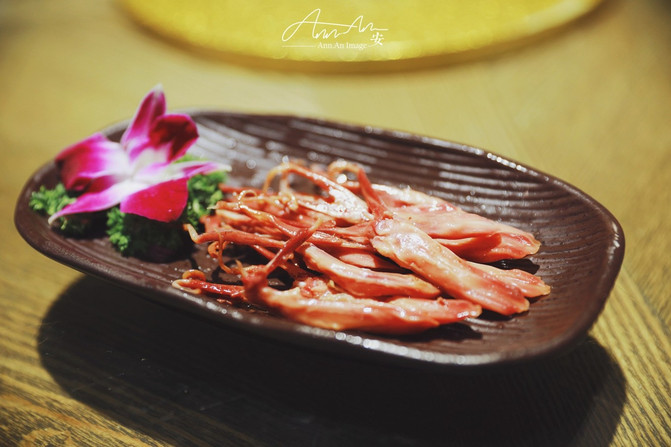




food| Liangzhu Shijiude
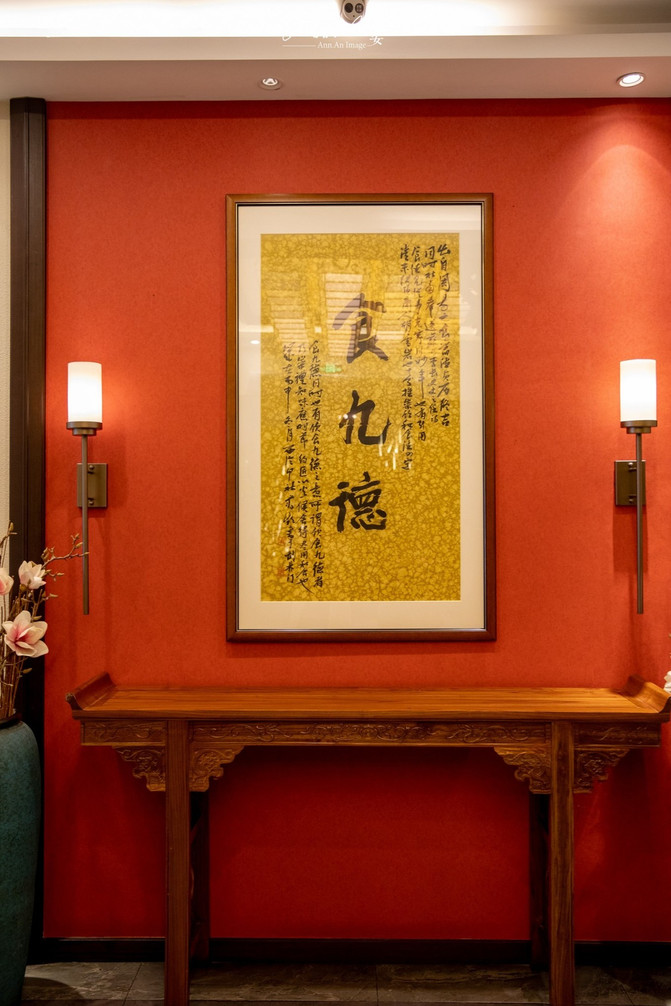
On the second day we arrived in Liangzhu, we went to the restaurant of Stuart Hotel for dinner. The restaurant was decorated like the hotel. It looked high-end and gorgeous. It had a good service team. The private rooms were clean and tidy. To order food, we had to go outside and look at the wall recipes. As outsiders, we still wanted to try our specialties, but we felt that there were not many local dishes. Fortunately, every dish I ordered was not trampled on and was quite delicious. I felt that the chef had the level of a chef of this level, but it didn't feel too amazing.
Recommend Maoxuewang, sweet and sour steak, and sour soup fat beef.







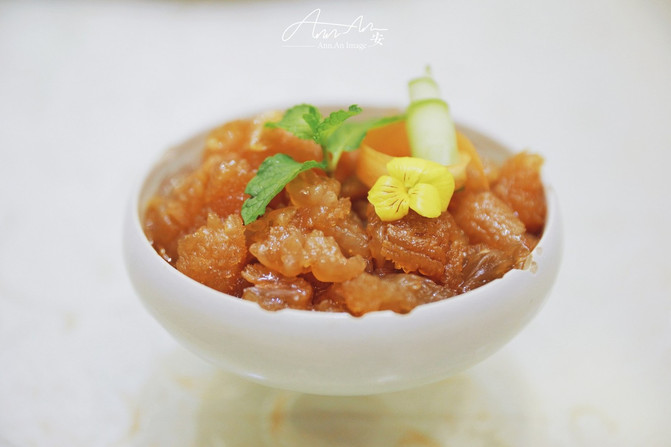




food| Liangzhu Private Cuisine

The first dinner we had in Liangzhu, our friends were all foreigners. They really wanted to try the authentic Hangbang dishes and wanted to know what Liangzhu people ate. We came to this restaurant based on the name. Unfortunately, this is a comprehensive restaurant, there are not many local dishes. I ordered the scallion buns stewed that can be eaten in all streets and alleys of Hangzhou, the loofah stewed dough sticks that Hangzhou people like, and the sizzling prawns, bullfrogs, etc. specially promoted in the store. The taste is fair and reasonable, and they are not expensive.
I recommend a dish that everyone will sweep it away in an instant. The fish head king in soil sauce. The side dishes inside are delicious, including small pieces of rice cake, taro, and rice flour... When the soup boiled, everyone added a bowl of rice and ate the bibimbap! The last pot of fish was eaten cleanly, and there was no soup left. I took photos to commemorate it. Hahaha.









sink| Stay at Leaf Time Art Hotel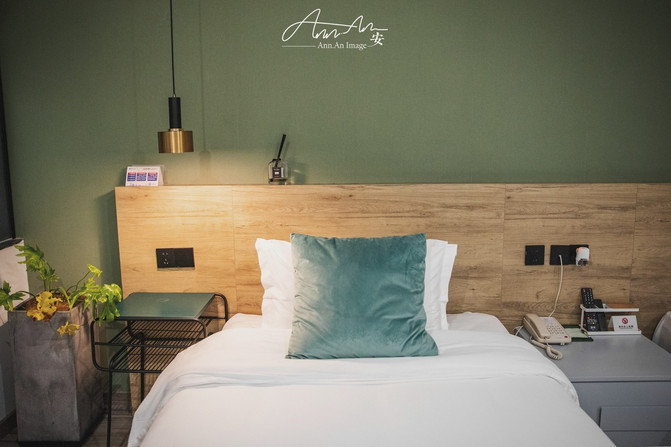
The hotel we stayed in Liangzhu, Leaf Time Art Hotel, has a beautiful literary name. Walking into the hotel is truly refreshing. It is the most popular avocado green this year, and popular Internet celebrity decorations can be seen everywhere. It is very suitable for young people and friends. Come and stay, and the price is very friendly to the people.
The details of the hotel rooms are all lovely. There are also fruits in the room. The chairs are all dark green, dark green, and light green. The pillows are also dark green and light green. The curtains are opened in the morning and there are lush green plants outside. I am in a good mood. Bathrobe, slippers, and toiletries are all complete. The only shortcoming is that the shower water is sparse and small...
The breakfast in the hotel is also delicious. The restaurant is not big and has a full range of food, including porridge, side dishes, salted duck eggs, various fruit breads, coffee, milk and soy milk. There is also a flour stall where various flour noodles and small wontons are freshly cooked.






Previous Article:Travel to Hangzhou Xianghu and stay at Yuxiang Lake Health Resort for a unique experience
Next Article:2017.11.17, Friday, alone, by car, go to Lin 'an Guide Village to enjoy the autumn
